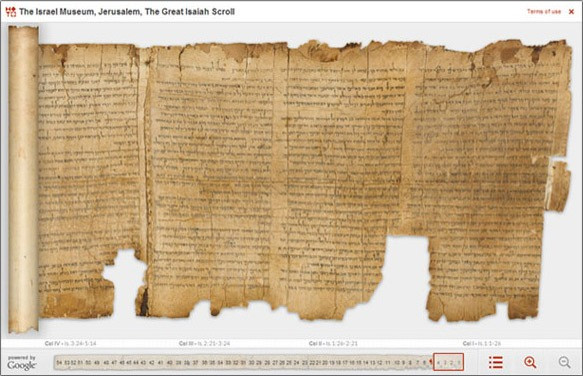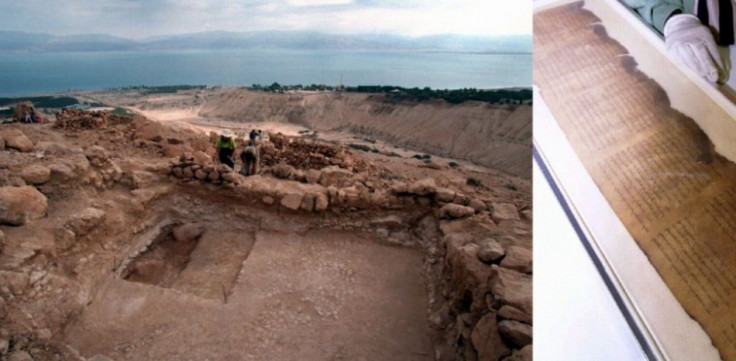Fragile and Historic Dead Sea Scrolls to be Read without being Unrolled
The Dead Sea Scrolls Digital Project, which provides access to these most ancient of biblical manuscripts, dated from the period of the Second Jewish Temple onwards, will now work towards reading and deciphering these most fragile and unopenable Dead Sea Scrolls.

The Israel Museum and Google's collaborative project have hired a research scientist who will help read the manuscripts through high-tech visualisation techniques.
Brent Seales, the director of the University of Kentucky's Center for Visualization and Virtual Environments, will work with the Paris-based Google Cultural Institute, which helps preserve and promote cultural heritage online, to read the scrolls which are too fragile to be unrolled, the University of Kentucky said in a statement last week.
"The group I'm going to be with focuses on enabling digital storytelling. Or basically enabling people to digitize and present interesting cultural materials in a way that is relevant for the 21st century," Seales, who also read the Pompeii scrolls that were in a similarly fragile state, said.
Under the Dead Sea Scrolls Digital Project, Google has so far digitised five complete scrolls from the Israel Museum. The five scrolls, which are now accessible worldwide on the Internet, include the Great Isaiah Scroll, Community Rule Scroll, Commentary on Habakkuk Scroll, Temple Scroll and the War Scroll. The Dead Sea Scrolls went online for the first time in September last year.
What are Dead Sea Scrolls?
One of the world's oldest texts of the Hebrew Bible and dating back to about 120 BC and as old as 300 BCE, the Dead Sea Scrolls were discovered in the 1950's by a shepherd in the Qumran caves at the northern part of the Dead Sea near Israel. The scrolls consist of about 900 texts.
Who Wrote the Dead Sea Scrolls?
Although texts of five scrolls have been digitised, allowing users from around the world to examine and study some of the oldest known biblical manuscripts, the identity of the actual author(s) of the Dead Sea Scrolls remains a mystery. This is despite significant research in to the matter of unraveling the mystery of the authors.
Popular belief suggests the Essenes, a group of devout Jews numbering around 200, who broke away from Jerusalem and moved to the Israeli Dead Sea area, are the authors of the Dead Sea scrolls. The sect, often cited as precursors to early Christians, are said to have hidden the scrolls in Qumran caves in 68 AD when the Romans destroyed their settlement.
The discovery of over 200 textiles in caves at Qumran in the West Bank further suggested that the Essenes were the authors of Dead Sea Scrolls. The textiles were found together with the Dead Sea Scrolls between 1947 and 1956.

A new study of the textiles by the researchers at the Israel Antiquities Authority (IAA) in November found that all the textile pieces were made of white linen. According to the researchers, it was unusual for white linen textile to have arrived in the region, as colourful wool was the most popular textile used in Israel around the time when the Dead Sea Scrolls are believed to have been written. The Essenes, known for their mysterious lifestyle and ritual purity, were said to have always being dressed in white. It could be they hid the white linen and scrolls inside the Qumran caves, sensing impending danger while fleeing the Roman army in 68 AD.
Clue to Hidden Treasure in the Dead Sea Scrolls
One of the texts of the Dead Sea Scrolls , written on a copper sheet and therefore also called the Copper Scroll, is said to have a list of locations where treasures of gold and silver are hidden or might be hidden. Although these have not been interpreted to date, it should also be added the treasure, if it ever existed, may not be there now, since it may have been discovered by the Romans in 68 AD when they destroyed the Essene settlement in Qumran.

© Copyright IBTimes 2025. All rights reserved.






















